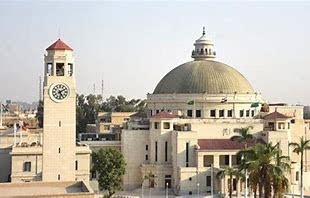It has been 50 years since scientists first created DNA in a test tube, stitching ordinary chemical ingredients together to make life”s most extraordinary molecule. Until recently, however, even the most sophisticated laboratories could make only small snippets of DNA — an extra gene or two to be inserted into corn plants, for example, to help the plants ward off insects or tolerate drought.
Now researchers are poised to cross a dramatic barrier: the creation of life forms driven by completely artificial DNA.
Scientists in Maryland have already built the world”s first entirely handcrafted chromosome – a large looping strand of DNA made from scratch in a laboratory, containing all the instructions a microbe needs to live and reproduce.
In the coming year, they hope to transplant it into a cell, where it is expected to “boot itself up,” like software downloaded from the Internet, and cajole the waiting cell to do its bidding. And while the first synthetic chromosome is a plagiarized version of a natural one, others that code for life forms that have never existed before are already under construction.
The cobbling together of life from synthetic DNA, scientists and philosophers agree, will be a watershed event, blurring the line between biological and artificial — and forcing a rethinking of what it means for a thing to be alive.
“This raises a range of big questions about what nature is and what it could be,” said Paul Rabinow, an anthropologist at the University of California at Berkeley who studies science”s effects on society. “Evolutionary processes are no longer seen as sacred or inviolable. People in labs are figuring them out so they can improve upon them for different purposes.”
That unprecedented degree of control over creation raises more than philosophical questions, however. What kinds of organisms will scientists, terrorists and other creative individuals make? How will these self-replicating entities be contained? And who might end up owning the patent rights to the basic tools for synthesizing life?
Some experts are worried that a few maverick companies are already gaining monopoly control over the core “operating system” for artificial life and are poised to become the Microsofts of synthetic biology. That could stifle competition, they say, and place enormous power in a few people”s hands.
“We”re heading into an era where people will be writing DNA programs like the early days of computer programming, but who will own these programs?” asked Drew Endy, a scientist at the Massachusetts Institute of Technology.
At the core of synthetic biology”s new ascendance are high-speed DNA synthesizers that can produce very long strands of genetic material from basic chemical building blocks: sugars, nitrogen-based compounds and phosphates.
Today a scientist can write a long genetic program on a computer just as a maestro might compose a musical score, then use a synthesizer to convert that digital code into actual DNA. Experiments with “natural” DNA indicate that when a faux chromosome gets plopped into a cell, it will be able to direct the destruction of the cell”s old DNA and become its new “brain” — telling the cell to start making a valuable chemical, for example, or a medicine or a toxin, or a bio-based gasoline substitute.
Unlike conventional biotechnology, in which scientists induce modest genetic changes in cells to make them serve industrial purposes, synthetic biology involves the large-scale rewriting of genetic codes to create metabolic machines with singular purposes.
“I see a cell as a chassis and power supply for the artificial systems we are putting together,” said Tom Knight of MIT, who likes to compare the state of cell biology today to that of mechanical engineering in 1864. That is when the United States began to adopt standardized thread sizes for nuts and bolts, an advance that allowed the construction of complex devices from simple, interchangeable parts.
If biology is to morph into an engineering discipline, it is going to need similarly standardized parts, Knight said. So he and colleagues have started a collection of hundreds of interchangeable genetic components they call BioBricks, which students and others are already popping into cells like Lego pieces.
So far, synthetic biology is still semi-synthetic, involving single-cell organisms such as bacteria and yeast that have a blend of natural and synthetic DNA. The cells can reproduce, a defining trait of life. But in many cases that urge has been genetically suppressed, along with other “distracting” biological functions, to maximize productivity.
“Most cells go about life like we do, with the intention to make more of themselves after eating,” said John Pierce, a vice president at DuPont in Wilmington, Del., a leader in the field. “But what we want them to do is make stuff we want.”
J. Craig Venter, chief executive of Synthetic Genomics in Rockville, knows what he wants his cells to make: ethanol, hydrogen and other exotic fuels for vehicles, to fill a market that has been estimated to be worth $1 trillion.
In a big step toward that goal, Venter has now built the first fully artificial chromosome, a strand of DNA many times longer than anything made by others and laden with all the genetic components a microbe needs to get by.
Details of the process are under wraps until the work is published, probably early next year. But Venter has already shown that he can insert a “natural” chromosome into a cell and bring it to life. If a synthetic chromosome works the same way, as expected, the first living cells with fully artificial genomes could be growing in dishes by the end of 2008.
The plan is to mass-produce a plain genetic platform able to direct the basic functions of life, then attach custom-designed DNA modules that can compel cells to make synthetic fuels or other products.
It will be a challenge to cultivate fuel-spewing microbes, Venter acknowledged. Among other problems, he said, is that unless the fuel is constantly removed, “the bugs will basically pickle themselves.”
But the hurdles are not insurmountable. LS9 Inc., a company in San Carlos, Calif., is already using E. coli bacteria that have been reprogrammed with synthetic DNA to produce a fuel alternative from a diet of corn syrup and sugar cane. So efficient are the bugs” synthetic metabolisms that LS9 predicts it will be able to sell the fuel for just $1.25 a gallon.
At a DuPont plant in Tennessee, other semi-synthetic bacteria are living on cornstarch and making the chemical 1,3 propanediol, or PDO. Millions of pounds of the stuff are being spun and woven into high-tech fabrics (DuPont”s chief executive wears a pinstripe suit made of it), putting the bug-begotten chemical on track to become the first $1 billion biotech product that is not a pharmaceutical.
Engineers at DuPont studied blueprints of E. coli”s metabolism and used synthetic DNA to help the bacteria make PDO far more efficiently than could have been done with ordinary genetic engineering.
“If you want to sell it at a dollar a gallon . . . you need every bit of efficiency you can muster,” said DuPont”s Pierce. “So we”re running these bugs to their limits.”
Yet another application is in medicine, where synthetic DNA is allowing bacteria and yeast to produce the malaria drug artemisinin far more efficiently than it is made in plants, its natural source.
Bugs such as these will seem quaint, scientists say, once fully synthetic organisms are brought on line to work 24/7 on a range of tasks, from industrial production to chemical cleanups. But the prospect of a flourishing synbio economy has many wondering who will own the valuable rights to that life.
In the past year, the U.S. Patent and Trademark Office has been flooded with aggressive synthetic-biology claims. Some of Venter”s applications, in particular, “are breathtaking in their scope,” said Knight. And with Venter”s company openly hoping to develop “an operating system for biologically-based software,” some fear it is seeking synthetic hegemony.
“We”ve asked our patent lawyers to be reasonable and not to be overreaching,” Venter said. But competitors such as DuPont, he said, “have just blanketed the field with patent applications.”
Safety concerns also loom large. Already a few scientists have made viruses from scratch. The pending ability to make bacteria — which, unlike viruses, can live and reproduce in the environment outside of a living body — raises new concerns about contamination, contagion and the potential for mischief.
“Ultimately synthetic biology means cheaper and widely accessible tools to build bioweapons, virulent pathogens and artificial organisms that could pose grave threats to people and the planet,” concluded a recent report by the Ottawa-based ETC Group, one of dozens of advocacy groups that want a ban on releasing synthetic organisms pending wider societal debate and regulation.
“The danger is not just bio-terror but bio-error,” the report says.
Many scientists say the threat has been overblown. Venter notes that his synthetic genomes are spiked with special genes that make the microbes dependent on a rare nutrient not available in nature. And Pierce, of DuPont, says the company”s bugs are too spoiled to survive outdoors.
“They are designed to grow in a cosseted environment with very high food levels,” Pierce said. “You throw this guy out on the ground, he just can”t compete. He”s toast.”
“We”ve heard that before,” said Jim Thomas, ETC Group”s program manager, noting that genes engineered into crops have often found their way into other plants despite assurances to the contrary. “The fact is, you can build viruses, and soon bacteria, from downloaded instructions on the Internet,” Thomas said. “Where”s the governance and oversight?”
In fact, government controls on trade in dangerous microbes do not apply to the bits of DNA that can be used to create them. And while some industry groups have talked about policing the field themselves, the technology is quickly becoming so simple, experts say, that it will not be long before “bio hackers” working in garages will be downloading genetic programs and making them into novel life forms.
“The cat is out of the bag,” said Jay Keasling, chief of synthetic biology at the University of California at Berkeley.
Andrew Light, an environmental ethicist at the University of Washington in Seattle, said synthetic biology poses a conundrum because of its double-edged ability to both wreak biological havoc and perhaps wean civilization from dirty 20th-century technologies and petroleum-based fuels.
“For the environmental community, I think this is going to be a really hard choice,” Light said.
Depending on how people adjust to the idea of man-made life — and on how useful the first products prove to be — the field could go either way, Light said.
“It could be that synthetic biology is going to be like cellphones: so overwhelming and ubiquitous that no one notices it anymore. Or it could be like abortion — the kind of deep disagreement that will not go away.”
The question, if the abortion model holds, is which side of the synthetic biology debate will get to call itself “pro-life.”
_________________
The Washington Post
ADVERTISEMENT











